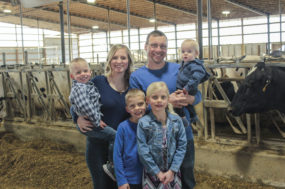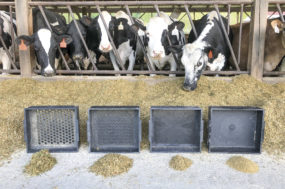What does being comfortable mean to you? Does it mean keeping your house’s thermostat set to a constant 72°F or does it mean wearing a pair of boots that fit just right? Perhaps it means reclining in your favorite chair and putting your feet up after a long day.
Regardless of what being comfortable means to you, cows that are comfortable are typically healthier and produce more milk. Sometimes, though, it can be difficult to determine how to make cows more comfortable. What do they want or need to be comfortable? It is not as though you can just ask them.
This is where researchers like myself come into play. As an applied ethologist, I study cow behavior during exposure to different management practices to evaluate which practices they prefer. We then share our results with you in hopes of maintaining a win-win situation between you and your cows.
It can be overwhelming to decide where to concentrate your efforts for improving cow comfort on your farm. Implementing some of the latest trends in cow comfort can be costly or require significant management changes.
Based on my last 14 years studying cow behavior, three specific areas rise to the top of my list for improving cow comfort. If these three tips are addressed on your farm, your cows are or will be rewarding you with fewer cases of disease and an increase in milk production.
Bedding
We want our cows to spend about 50% of their day lying or resting. All resting areas, regardless of type, (stalls versus drylot, for example) must provide plentiful dry bedding. An inadequate amount of bedding or bed support can cause pressure points and pain for our cows. Dry bedding is not only more comfortable but also minimizes risk for mastitis. The type of bedding material you choose also affects cow comfort. Cows offered softer lying surfaces spent more time lying. A one-hour increase in lying time results in 2 to 4 pounds of additional milk per cow per day.
Cooling
Summer heat can be brutal for dairy cows, especially our highest producers. Heat abatement within barns, holding pens and at feedbunks can help us reduce the negative effects of heat stress on cow comfort. Cows begin experiencing heat stress when the temperature-humidity index (THI) reaches 68. On the low end of the range, a THI of 68 occurs when it is 80ºF with 0% humidity outside. Heat abatement methods include using misters, fans or shades. Ensuring cows are cooled off during periods of heat stress (THI of 68 or greater) can result in up to 5 more pounds of milk per cow per day.
Avoid overcrowding
Overcrowding lactating cow pens negatively impacts cow feed intake, lying time and, consequently, milk production. Cows establish a social hierarchy within each pen, in which dominant cows displace subordinate cows from the feedbunk and resting area. When pens are overcrowded, we notice an increase in aggressive behaviors such as displacements. Consequently, feed intake decreases, lying time decreases and milk production drops. Additionally, overcrowding is associated with a lower milkfat percentage, higher somatic cell counts (SCC) and an increase in incidences of hoof disorders.
Achieving a comfortable environment for your cows may seem like a moving target, but if you focus on the top three tips above to start with, you and your cows will begin to reap the benefits of cow comfort. Enjoy a true win-win.






